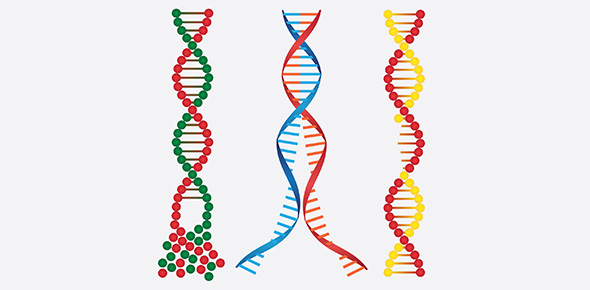Related Flashcards
Related Topics
Cards In This Set
| Front | Back |
|
Six Groups of Lipids
|
1- Fatty acids
2- Triacylglycerols 3- Phospholipids 4- Glycolipids 5- Steroids 6- Terpenes |
|
Major Functions of Lipids
|
-Phospholipids- structural component of membrane
-Triacylglycerols- store metabolic energy, provide thermal insulation -Steroids- regulate metabolic activity -Some fatty acids can serve as local hormones (ie: eiconsanoids) |
|
How do each of the following denaturing agents work?
1- urea 2- salt/pH changes 3- mercaptoethanol 4- organic solvents 5- heat |
1- urea: disrupts hydrogen bonds
2- salt/pH changes: disrupts electrostatic bonds 3- mercaptoethanol: disrupts disulfide bonds 4- organic solvents: disrupts hydrophobic forces 5- heat: disrupt all forces |
|
The 3 components of a nucleotide
|
1- Phosphate group
2- 5-carbon sugar (ribose) 3- Nitrogenous base (A, T, C, G, U) |
|
Types of Enzyme Regulation
|
-Proteolytic cleavage
-Reversible covalent modification (ie: phosphorylation) -Control proteins (ie: G proteins) -Allosteric interactions (ie: cooperativity) -Negative feedback -Positive feedback |
|
Net products of glycolysis per glucose
|
2 pyruvates, 2 NADH, 2 ATP
|
|
Net products of pyruvate oxidation in mitochondria matrix, per pyruvate
|
1 NADH, 1 CO2, 1 acetyl CoA
|
|
Net products of Krebs cycle in mitochondria matrix, per 1 turn
|
3 NADH, 2 CO2, 1 FADH2, 1 ATP
|
|
Where are amino acids deaminated?
|
In the liver. Once the NH3 is gone, the rest of the amino acid is converted to pyruvic acid or acetyl CoA before entering the Krebs cycle
|
|
Isoelectric point
|
The pH at which an amino acid carries no net electric chrage
|
|
Peptide bond
|
An amide bond between the amino group of one amino acid and the carbonyl group of another. This bond has a partial double bond character that causes the protein backbone to be rigid and planar.
|
|
Allosteric enzymes
|
Enzymes that have a regulatory/allosteric site in addition to a catalytic/active site
|
|
How does Km relate to enzyme-substrate affinity?
|
Low Km means high affinity since the enyzmes needs a lesser concentration of substrate for binding. Km does not depend on the enzyme concentration, while Vmax does.
|
|
Where does fatty acid oxidation take place?
|
In the mitochondria. For a n-C fatty acid, oxidation will produce n/2 acetyl-CoA's.
|
|
Do bacteria have cholesterol in their plasma membranes?
|
No, only eukaryotic cells do. Bacteria have a cell wall to preserve osmolarity.
|






